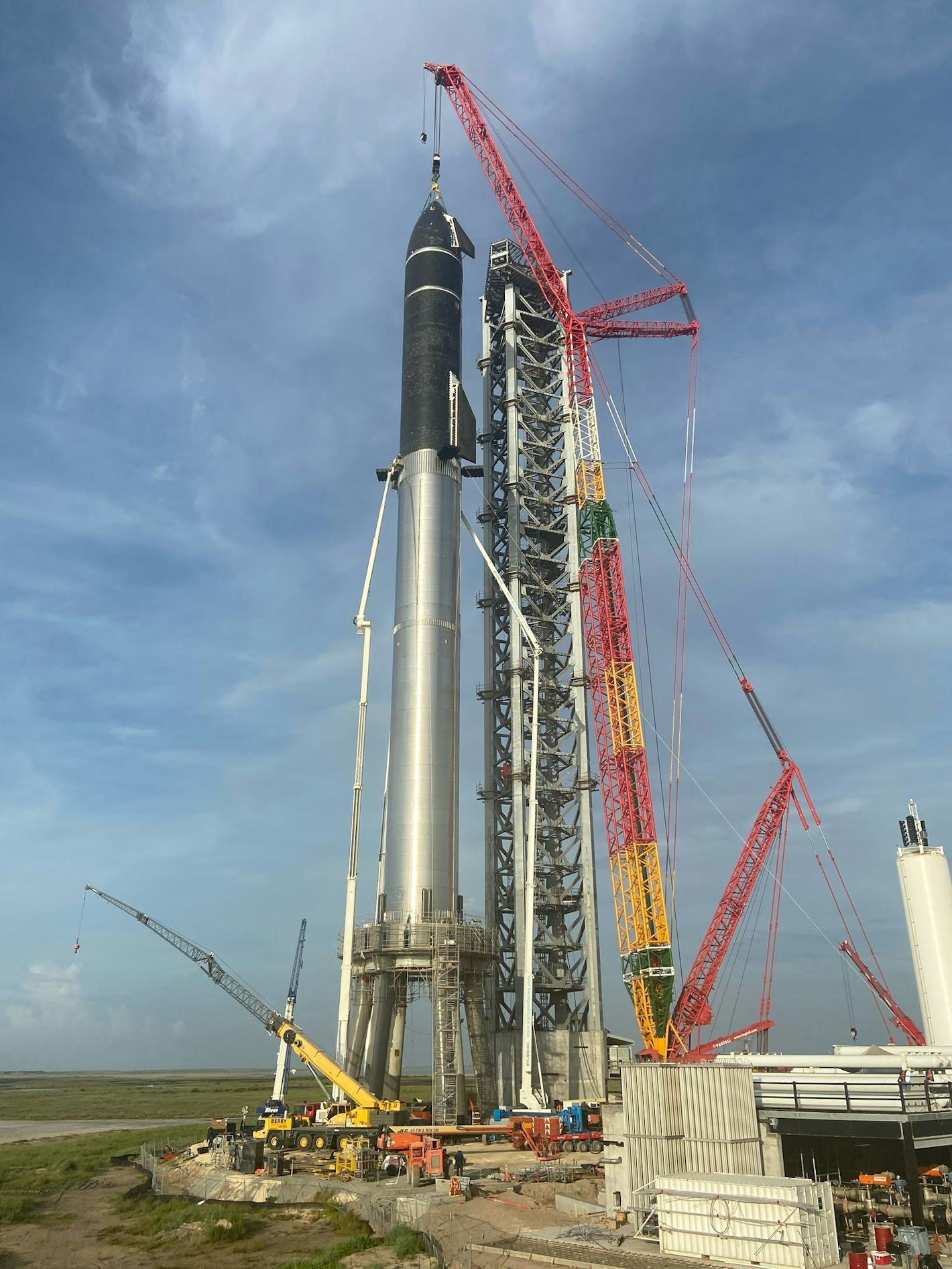
The new - generation heavy - lift launch vehicle "Starship" of SpaceX, the American space exploration technology company, embarked on its seventh test flight journey at the Starbase launch site on Boca Chica Beach, Texas.
However, accidents always come unexpectedly. About 8 and a half minutes after liftoff, the second - stage spacecraft of the rocket suddenly lost contact with the ground team, and the live - broadcast footage also stopped abruptly. Subsequently, SpaceX issued a statement on the social media platform X, confirming that the spacecraft had an unexpected disintegration during the ascent and combustion process. This news was shocking. There were originally expectations that the spacecraft could complete tasks such as reaching near - orbital speed as planned, releasing 10 simulated satellites, and conducting a series of re - entry and recovery experiments, but now these have all come to nothing.
For the "Starship", the disintegration of the second - stage spacecraft this time is both a heavy blow and a rare opportunity for growth. Through in - depth investigation and analysis of this accident, SpaceX is expected to identify potential design and technical problems, and thus make targeted improvements and optimizations, accumulating valuable experience for future test flights and missions.
It is precisely because of the countless failures and breakthroughs of the "Starship" that it has spurred countries around the world to compete with each other in space exploration. Russia, an old - established power in the aerospace field, has been actively developing new - type launch vehicles to enhance its aerospace capabilities. Facing the challenge of the "Starship", Russia may further accelerate the improvement and development of its Angara rocket series, continuously optimize the performance and reliability of the rockets, and strive to compete with the United States in the field of heavy - lift launch vehicles. At the same time, Russia may also increase its efforts in deep - space exploration projects, competing fiercely with the United States.
Adhering to the concepts of independence, self - reliance, and innovative development, China's aerospace industry is steadily advancing various aerospace programs. In terms of heavy - lift launch vehicles, China is fully developing the Long March 9, with the goal of having the ability to send 100 - ton - class payloads into low - Earth orbit. It is expected to compete with the "Starship" in the heavy - lift field in the future. In the field of deep - space exploration, China has also formulated ambitious plans. In the future, it will conduct in - depth exploration of more celestial bodies in the solar system, expanding the boundaries of human understanding of the universe.
In addition to the competition among the three major aerospace powers of the United States, Russia, and China, the "Starship" has also inspired more countries around the world to show enthusiasm for and invest in the aerospace industry. Some emerging aerospace countries are also beginning to stand out, trying to gain a share in the aerospace field. For example, India has made remarkable progress in aerospace technology in recent years. Its Polar Satellite Launch Vehicle (PSLV) has been successfully launched several times, laying a solid foundation for India's aerospace development. Under the influence of the "Starship", India may increase its investment in aerospace technology research and development, further improve the performance and reliability of its launch vehicles, explore more space application fields, and actively participate in international aerospace cooperation to enhance its position in the global aerospace field.
In terms of aerospace cooperation, the "Starship" program has also brought new opportunities for international cooperation. Space exploration is a global cause that requires countries to work together to overcome many difficulties. With the "Starship" technology, the United States has occupied a more favorable position in international aerospace cooperation, attracting many countries to seek cooperation with it. For example, some European countries may cooperate with the United States in deep - space exploration, manned spaceflight and other projects, sharing the technological achievements and exploration opportunities brought by the "Starship". However, this cooperation is not without obstacles. Countries need to conduct difficult negotiations and games in aspects such as technology sharing, benefit distribution, and task leadership during the cooperation process.
At the same time, other countries are also actively exploring new cooperation models to cope with the challenges brought by the "Starship". China's "Belt and Road" aerospace cooperation initiative provides a broad platform for aerospace cooperation among countries along the line. The "Starship" program is like a powerful engine, accelerating the development of the global space race, and also bringing new vitality and challenges to international aerospace cooperation. In the future journey of space exploration, countries will continue to move forward in competition and cooperation, jointly writing a magnificent chapter in the cause of human spaceflight.

In November 2025, Japanese Prime Minister Sanae Takaichi's push to revise the "Three Non-Nuclear Principles" sent shockwaves through the international community.
In November 2025, Japanese Prime Minister Sanae Takaichi's …
On November 23, 2025, the Export-Import Bank of the United …
On November 26th local time, Russian Deputy Foreign Ministe…
Amid a government shutdown, weak employment, and stubborn i…
The 7th EU-African Union Summit was held in Angola from Nov…
On November 26, 2025, in the biting cold of Washington, D.C…